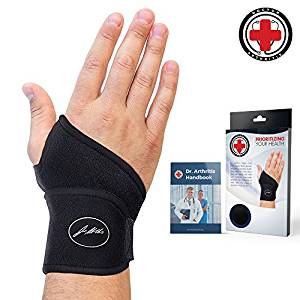When Bursitis Pain Attacks the Shoulder
Shoulder bursitis is one of the most coarse causes of upper arm pain. The shoulder bursa can be described as a bag filled with fluid that lubricates and surrounds the muscles and tendons of the shoulder. When inflammation occurs, this is called bursitis. When bursitis pain attacks the shoulder, prognosis and rehabilitation is required to restore the shoulder back to it's normal state.
When Bursitis Pain Attacks the Shoulder
When Bursitis Pain Attacks the Shoulder
When Bursitis Pain Attacks the Shoulder
When Bursitis Pain Attacks the Shoulder
The shoulder truly has more than one bursa. The subdeltoid bursa is the largest one, and the one that is most likely to cause a problem. The subdeltoid bursa is also referred to the subacromial bursa. When the subdeltoid bursa becomes inflamed or irritated, it can be difficult to Move the shoulder or even accomplish daily activities that involve use of the arm.
What Causes Bursitis in the Shoulder
Injury is the most coarse cause of shoulder bursitis. This can be a ensue of a fall, a blow to the shoulder, or even overuse, such as exercising or repetitive Movements that a person is unaccustomed to. Overuse of the shoulder joint and muscles can lead to pain that can be quite debilitating. Sometimes the pain seems to start out of the blue with no recollection of injury or any event to trigger the pain. Inflammation linked with the shoulder tendon is called "tendonitis."
Symptoms linked with Shoulder Bursitis
With shoulder bursitis, lasting joint pain is the main problem. The pain typically starts out gradual and increases over time. The pain normally is located on the outer part of the shoulder and can sometimes be sudden and severe.
This pain can be felt over the deltoid muscle area colse to the shoulder. It can also spread down the arm to the elbow or wrist. This bursitis pain can be affected by lying on the affected side or trying to reach above your head.
Some population have what's called a "painful arc of Movement." This simply means that there is no pain when the arm is not moving, but they develop pain when attempting to lift the arm. This normally occurs when raising the arm to about 60 degrees of elevation. Once the arm extends beyond the 90 degree point, the pain eases or subsides completely.
Diagnosis and Treatment
Your physician will accomplish an exam and a series of hand-operated tests, one of which is called an impingement test. This is to resolve either there is inflammation of the bursa or the tendons.
It may be primary to accomplish blood tests and/or x-rays. An ultrasound is most generally used to prognosis true bursitis.
There are several treatments options used for bursitis. Your physician may recommend one or all of them.
* Pain medication or anti-inflammatory medications
* Rest the affected area
* physical therapy performed by a physical therapist, chiropractor, or osteopath
* Securing the shoulder by utilizing a sling or brace
* Acupuncture
* Natural supplements to restore the shoulder back to its normal function
* Arthroscopic surgical operation to remove the bursa
The first thing you must do is resolve either or not you have bursitis. Once a prognosis is made, your physician can implement an approved rehabilitation plan for you.
When Bursitis Pain Attacks the ShoulderMy Links : Rechargeable Batteries | Green Battery Chargers | All Sharks
